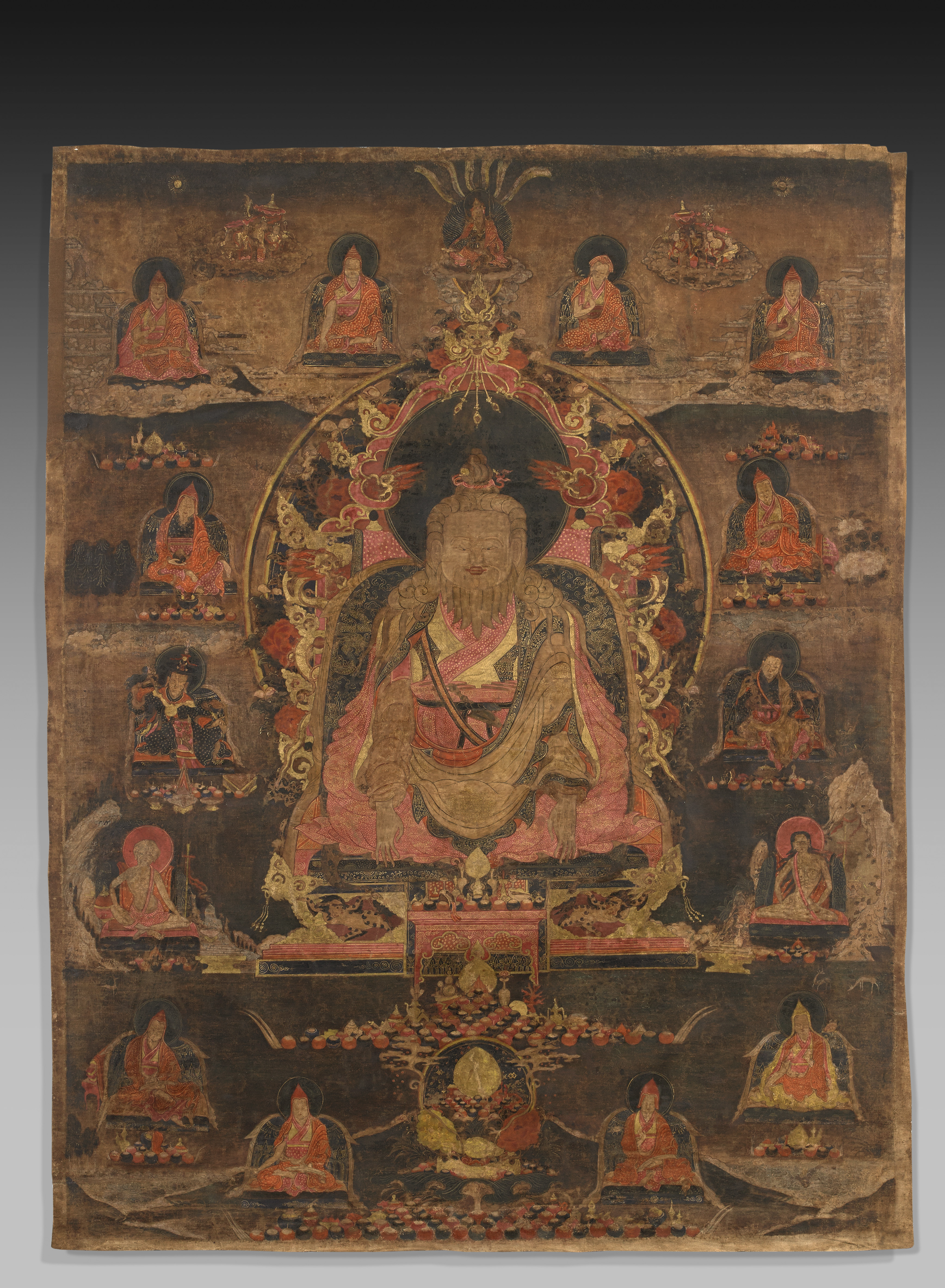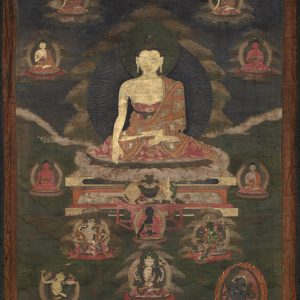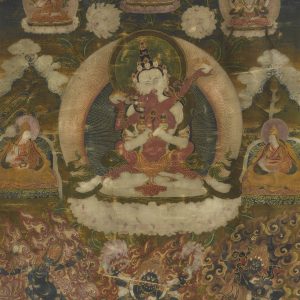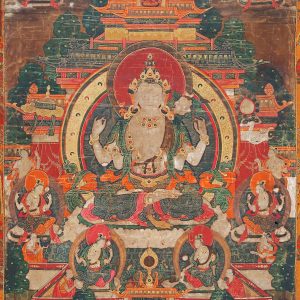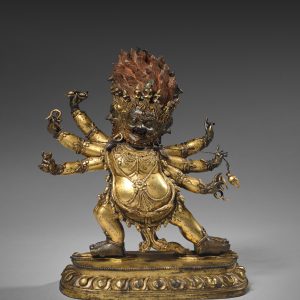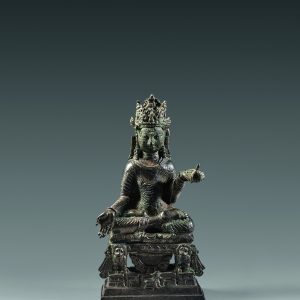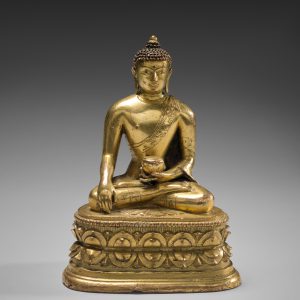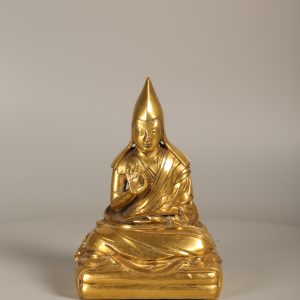Thang-stong rgyal-po
60 000,00€
Tempera on canvas
Central Tibet
Late 16th – first half of 17th century
D. 83 x 64 cm or 32 ¾ x 25 ¼ in
Description
On this thang-ka, the main character, of heroic size as is the custom, is the focus of attention.
In Tibetan art up to the 15th century, portraits of holy men are conventional images. Then things changed. The faithful depiction of pontiffs was part of their “bodily relics” whose veneration brought merit on disciples. Thus the traits of this person could indicate he is Thangtong Gyalpo (1385?-1464?), with his characteristic beard ending in long tufts of hair. This great mystic was a member of the ‘Brug-pa order, a branch of the Bka’-brgyud-pa monastic school. A metallurgist, he was famous for building several iron-chain suspension bridges, a huge achievement at that time. He is also credited with building the Dhungtse Lhakhang stupa near Paro in Bhutan. He also invented Tibetan opera.
This convenient identification remains subject to discussion however. In the most common iconography, Thangtong Gyalpo is seated with his hands in his lap, holding a vase of abundance. In other depictions, he makes various gestures but is identifiable by the iron chain in his right hand. On a wall painting described by David Jackson (2015, p. 135), the two traditions are combined; his right hand, held out toward the ground, holds the chain and the left, in his lap, holds the vase.
Both hands downward, like those of an ascetic at rest, is a rare gesture in Tibetan iconography but instances of it can be found. Within the Pantheon of Aṣṭasāhasrikā alone, we can find seven monks in this posture (Chandra, 1991, Nos. 1514, 1722, 1729, 1958, 1964, 1977, 2021, 2099 & 2110) but no ascetic.
In the top part of the painting is the sorcerer Padmasambhava (8th century), which implies that the other characters represented are spiritual descendants of that master, and concerns the study of a text or the practice of a ritual. One of the 25 disciples of Padmasambhava, Sangye Yeshe, wearing the black hat of the ferocious dancers, is located at the left of the main character (Chandra, 1991, Nà. 1660). Opposite him may be Marpa (1012-1096) and below is his disciple, the mystic poet Milarepa (1040-1123). Two major figures in Bka’-brgyud-pa tradition. It is difficult to identify the other monks whose hats belong to the Bk’a-gdams-pa, Sa-skya-pa and Bka’-brgyud-pa orders.
The work is part of the “new sMan-bris » (sMan-bris gsar-ma) style” created by the painter Chos-dbyings rgya-mtsho, active circa 1620 to 1660, a style especially appreciated by the 5th Dalai Lama (1617-1682). This painting bears all its characteristics: dark green and brown background, extremely meticulous drawing reminiscent of the art of miniatures. Moreover, certain details are gilded. Motifs such as “ourloupés” clouds and rocks are part of Chinese tradition.
Rare in its highly unusual iconography, remarkable in its refined pictoral treatment, this painting, in spite of its sectarian divergences, falls within the realm of great Tibetan art as found in the grandiose projects of the Grand Ve and perpetuated by Regent Sangs-rgyas rgya-mtsho, who reigned from 1679 to 1705.
Provenance : J. Stewart collection, Europe.
Art Loss Register Certificate, ref. S00106952.
- Candra, Lokesh, Buddhist iconography. Compact Edition. New Delhi : International Academy of indian Culture – Aditya Prakashan, 1991.
- Jackson, David P., Painting Traditions of the Drigung Kagyu School. New York : Rubin Museum of Art, 2015

